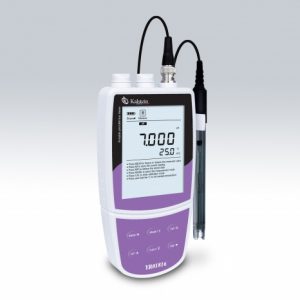Cadmium is a heavy metal and can be found accumulated on the surface of soils. It is an element that is not essential to complete the life cycle of organisms, is one of the most toxic in the food chain and does not undergo chemical or microbial degradation. This metal is included in the list of priority pollutants for most environmental protection institutions.
Cadmium is a natural constituent of soil. However, their concentration may increase because of human activities. For example, cadmium can reach agricultural land through irrigation with contaminated water, aerial deposition, phosphate fertilizers and manure fertilizer application.
Cadmium is easily mobilized into and absorbed by plants, so a high concentration of cadmium in the soil limits the agricultural use of the land. This occurs because the cadmium content in the soil is directly linked to the concentration of the metal in the vegetables. Consequently, there is a risk associated with the consumption of vegetables grown in areas contaminated with cadmium.
Is it harmful to consume food contaminated with cadmium?
The intake of food contaminated with cadmium represents the main way of entering the body. As a result of different investigations it has been shown that plant species may have different capacities to absorb and accumulate cadmium. For example, rice, lettuce, spinach, celery and cabbage are species that accumulate higher amounts of cadmium compared to other species.
The presence of high concentrations of this metal in the body, can affect cellular homeostasis and different biological processes of the body, resulting in serious effects such as liver dysfunction, emphysema, anemia, osteomalacia, neurological deterioration and damage to testes, pancreas and adrenal glands. In addition, anatomic or functional malformations or anomalies in fetuses, cancer and even death.
Importance of cadmium monitoring in agricultural activities
Due to the alteration of the cadmium cycle caused by human activities, it is necessary to evaluate the cadmium content in soils that are available for agriculture. On the other hand, because food represents the main source of contamination for humans, it is required to know and control the levels of cadmium in food, in order to reduce or avoid its consumption.
It is also useful to analyze which species can be cultivated, considering as much as possible, plant and cultivar species that present naturally, ability to accumulate and translocate a smaller amount of cadmium.
There are different methods to determine the total concentration of cadmium in the soil, useful to verify compliance with regulations on the control of metal contamination in the soil. If the total concentration of metals in the soil exceeds the characteristic values of the area, it can be an indicator of accumulation either by human activities or due to natural biochemical processes.
How is cadmium assessed in agricultural activities?
The assessment of cadmium levels in soil and food can be performed with the ion selective electrode, also known as ISE. It is an analytical technique that allows to determine the activity of ions in an aqueous solution, measuring the electrical potential. It allows the measurement of cadmium ions quickly and easily, at laboratory or field level.
Ion-selective electrodes are modern analytical tools that facilitate the assessment of the ionic activity of samples, quickly and directly. They form a versatile, affordable and advantageous measurement system, compared to other techniques, for example, it is relatively economical and easy to perform. In addition, it has a wide range of cadmium concentration measurement.
Kalstein Cadmium Ion Meters
At Kalstein we offer a wide variety of Cadmium Ion Meters, from the YR series. You can choose the one that best suits your needs. Kalstein cadmium ion meters, which offer the possibility to select the concentration units, e.g. ppm, mg/L and MOL/L, simplify the measurement process by directly reading the ion concentration. In addition, they are designed with a backlit LCD screen and offer a set-up menu that allows the number of calibration points, stability criteria, temperature, unit, date and time, among others, to be set. For more information on Kalstein cadmium ion meters, visit the link HERE




